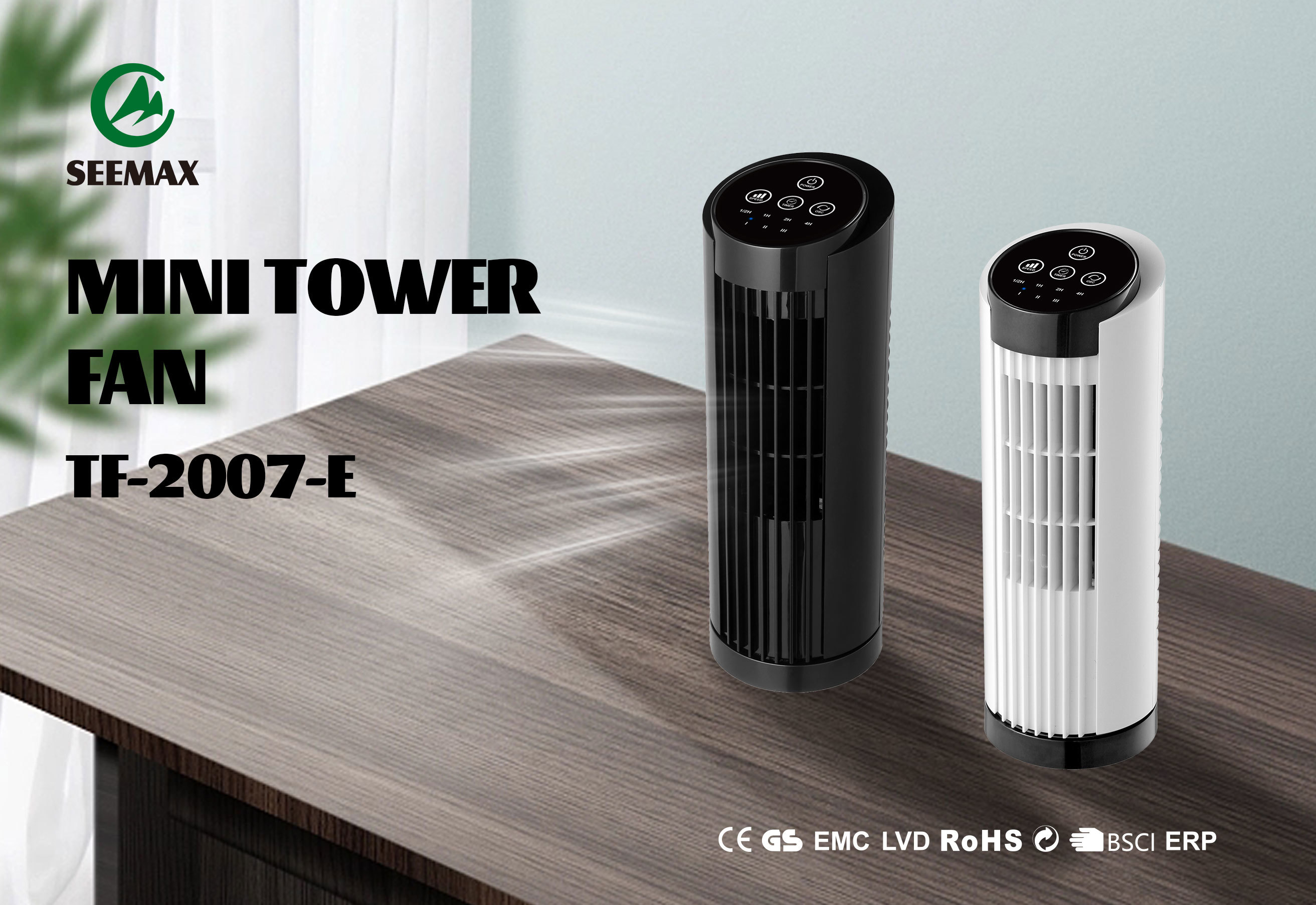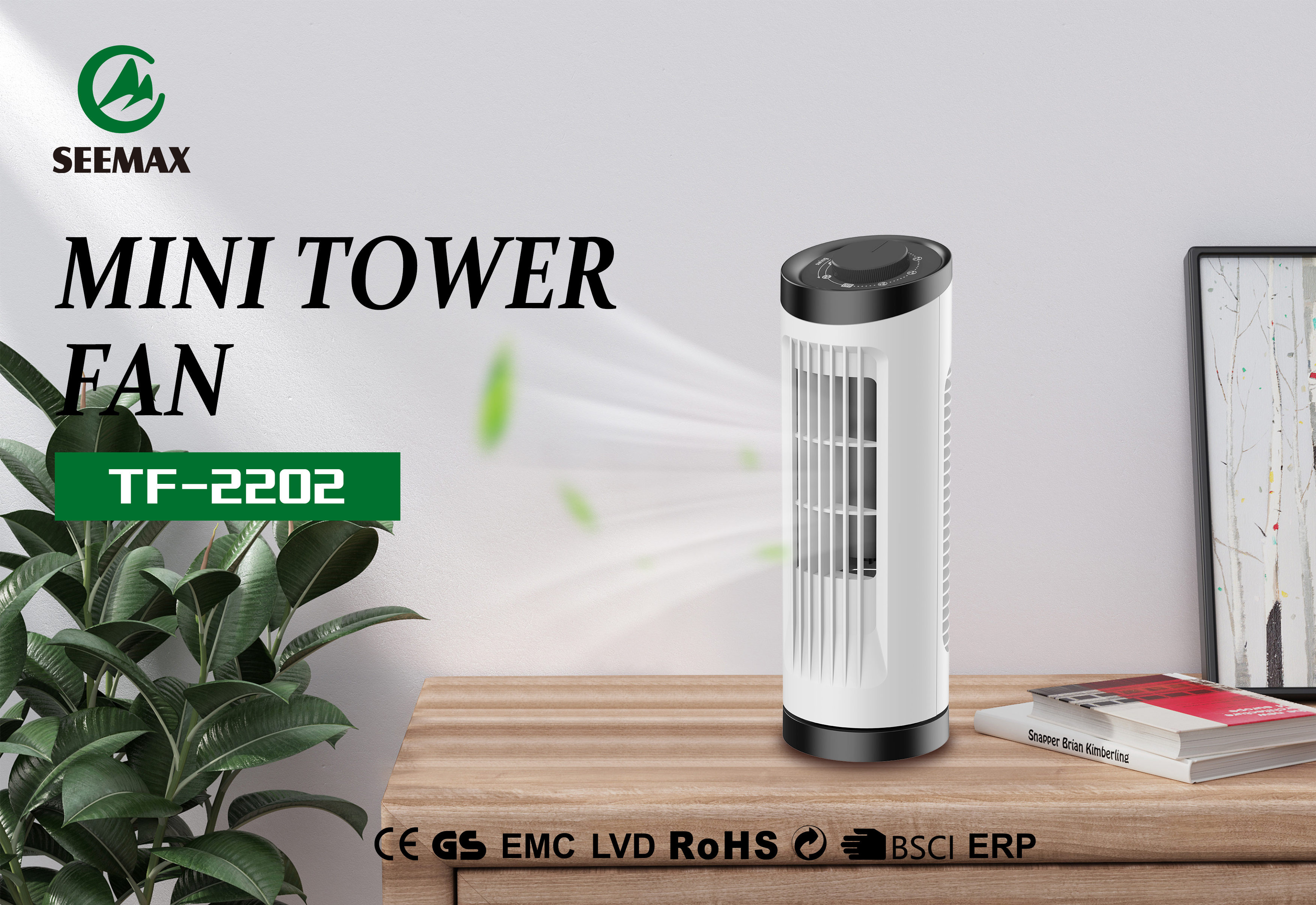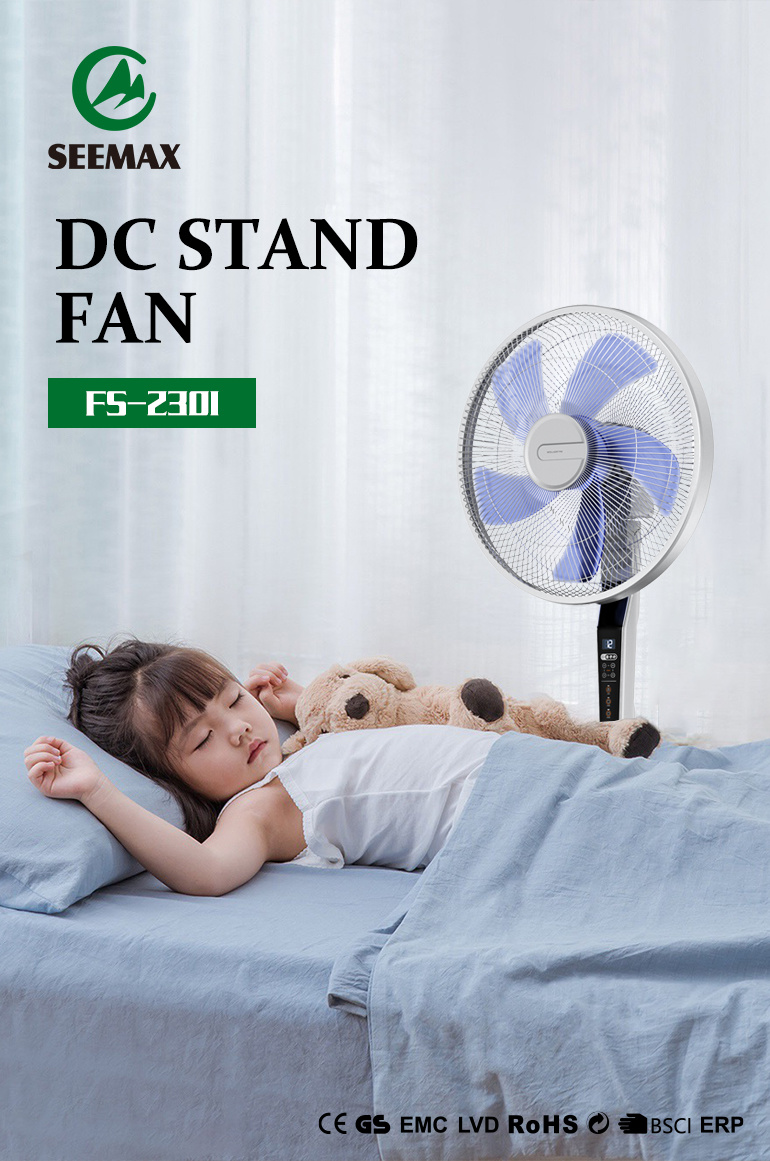No data
07
2024
-
06
What's the Best Fan to Cool a Room?
Ricardo B2B Manufacturers sales28@seemax.com.cn

Outline:
I. Introduction
- Overview of the importance of effective room cooling
- Mention of various fan types available
- Importance of choosing the right fan for specific needs
II. Types of Fans for Cooling a Room
- Tower Fans
- Pedestal Fans
- Desk Fans
- Box Fans
- Window Fans
III. Factors to Consider When Choosing a Fan
- Room Size
- Airflow and Power
- Noise Levels
- Energy Efficiency
- Features and Functionality
- Portability and Design
- Price Range
IV. Best Fans for Different Room Types
- Best Fan for Bedrooms
- Best Fan for Living Rooms
- Best Fan for Home Offices
- Best Fan for Kitchens
- Best Fan for Large Rooms
V. Pros and Cons of Popular Fan Types
- Tower Fans
- Pedestal Fans
- Desk Fans
- Box Fans
- Window Fans
VI. Top Fan Recommendations for 2024
- Best Overall Fan
- Best Budget Fan
- Best Premium Fan
- Best Smart Fan
- Best Compact Fan
VII. How to Maintain and Clean Your Fan
- Importance of regular maintenance
- Step-by-step cleaning guide
- Tips for prolonging fan lifespan
VIII. FAQs About Fans
- Difference between tower and pedestal fans
- How tower fans work
- Can tower fans cool large rooms?
- Are tower fans energy-efficient?
- Cleaning and maintenance tips
- Safety tips for using fans
IX. Conclusion
- Recap of benefits of choosing the right fan
- Encouragement to assess individual needs and select accordingly
I. Introduction
Effective room cooling is essential for maintaining comfort and productivity, especially during hot and humid weather conditions. Whether it's a residential space or a commercial environment, the need for a reliable cooling solution is undeniable. Various fan types cater to different cooling requirements, including ceiling fans, tower fans, pedestal fans, and desk fans. Each type offers unique features and benefits, such as size, airflow capacity, energy efficiency, and noise level.
Choosing the right fan for specific needs is crucial for optimizing cooling effectiveness and energy efficiency. Factors such as room size, layout, ventilation, and personal preferences play significant roles in determining the most suitable fan type. For instance, ceiling fans are ideal for circulating air in larger rooms, while tower fans are space-saving options suitable for smaller areas. Pedestal fans offer adjustable height and tilt options, making them versatile for various settings.
Moreover, selecting a fan with additional features like remote control, timer settings, and oscillation can enhance convenience and customization. By understanding the distinct advantages of each fan type and considering individual requirements, users can make informed decisions to ensure optimal room cooling and comfort. Thus, the importance of choosing the right fan cannot be overstated, as it directly impacts indoor climate control, energy consumption, and overall satisfaction.

II. Types of Fans for Cooling a Room
Various types of fans cater to diverse cooling needs, each offering unique features and benefits to enhance indoor comfort and airflow management.
Tower Fans: These slender, vertical fans are designed for compact spaces, offering a sleek and modern aesthetic. Tower fans utilize a vertical oscillating motion to distribute air evenly across the room. They are ideal for smaller rooms or areas where space is limited, providing efficient cooling without occupying much floor space.
Pedestal Fans: Featuring a large circular fan head mounted on an adjustable stand, pedestal fans are known for their powerful airflow and wide coverage area. These fans are best suited for larger rooms or spaces that require higher air circulation. The adjustable height and tilt options allow users to customize airflow direction according to their preferences.
Desk Fans: Compact and portable, desk fans are designed for personal cooling in small spaces such as offices, bedrooms, or study areas. These fans typically feature a small fan head mounted on a base that can be placed on a desk or tabletop. Desk fans provide localized cooling, making them ideal for individual comfort during work or relaxation.
Box Fans: Characterized by their square or rectangular shape, box fans are versatile cooling solutions suitable for various settings. These fans are known for their high airflow capacity and can be placed on the floor, mounted on walls, or fitted into windows for ventilation. Box fans are popular for their ability to quickly cool down a room, making them a practical choice for both residential and commercial use.
Window Fans: Designed to fit into standard window frames, window fans offer dual functionality by facilitating both inward and outward airflow. These fans are ideal for ventilation purposes, drawing in fresh outdoor air or expelling indoor stale air depending on the user's preference. Window fans help improve indoor air quality and can supplement other cooling systems during moderate weather conditions.
III. Factors to Consider When Choosing a Fan

When it comes to selecting the right fan for your needs, several key factors should be considered to ensure optimal performance, efficiency, and satisfaction.
Room Size: The size of the room where the fan will be used is a crucial factor to consider. Matching the fan's power to the dimensions of the room ensures adequate airflow and effective cooling. Larger rooms require fans with higher airflow capacity to circulate air efficiently and maintain comfort.
Airflow and Power: The airflow capacity of a fan is typically measured in CFM (Cubic Feet per Minute). This rating indicates how much air the fan can move in a minute. Higher CFM ratings generally correlate with better cooling performance, especially in larger spaces. Additionally, consider the power consumption of the fan, as higher airflow often requires more energy.
Noise Levels: The noise level of a fan can significantly impact its usability, particularly in quiet environments such as bedrooms or offices. Look for fans with quiet operation features, such as specially designed blades or motor technology, to minimize noise while still providing effective cooling. Some fans even have adjustable speed settings to further reduce noise when quieter operation is desired.
Energy Efficiency: Opting for energy-efficient fans can help reduce electricity consumption and save on energy bills over time. Look for fans with Energy Star certification or features such as DC motors, which are known for their energy-saving capabilities. Investing in an energy-efficient fan not only benefits your wallet but also reduces environmental impact.
Features and Functionality: Consider the additional features and functionalities offered by the fan. Oscillation allows the fan to distribute air more evenly throughout the room, while remote control and timer settings provide convenience and customization options. Some fans also offer air purification features, which can help improve indoor air quality by removing dust, allergens, and other pollutants.
Portability and Design: Evaluate the portability and design of the fan, especially if you plan to move it between different rooms or locations. Choose a fan that is lightweight and easy to transport, with ergonomic handles or built-in casters for added convenience. Additionally, consider the aesthetic appeal of the fan and how it complements the decor of your space.
Price Range: Set a budget for your fan purchase and compare different models within your price range. Consider the overall value for money, taking into account factors such as performance, features, energy efficiency, and durability. Remember that while a higher upfront cost may seem daunting, an energy-efficient fan can lead to long-term savings on utility bills.
IV. Best Fans for Different Room Types
V. Pros and Cons of Popular Fan Types
Tower Fans
Pros: Tower fans are favored for their space-saving design, making them ideal for tight spaces. Their modern aesthetic blends well with contemporary interiors. Additionally, they typically operate quietly, making them suitable for bedrooms or quiet environments.
Cons: Despite their sleek appearance, tower fans may offer less powerful airflow compared to other types. While they're effective for personal use or small rooms, they might not provide sufficient cooling for larger spaces.
Pedestal Fans
Pros: Pedestal fans are known for their high power and wide coverage area. Their adjustable height feature allows users to customize airflow direction according to their preferences, making them versatile for various room sizes.
Cons: The bulky design of pedestal fans can take up more floor space compared to other types. Additionally, they may produce more noise, especially at higher speed settings, which could be a concern in quieter environments.
Desk Fans
Pros: Desk fans are compact and portable, making them ideal for personal cooling in small areas like offices or study spaces. They offer focused airflow and can be easily moved from one location to another.
Cons: Desk fans are limited in their cooling capacity and are best suited for individual use in small areas. They may not provide sufficient airflow for larger rooms or spaces.
Box Fans
Pros: Box fans are known for their high airflow capacity and versatility. They can be placed on the floor, mounted on walls, or fitted into windows for ventilation, providing effective cooling in various settings.
Cons: Despite their powerful performance, box fans can be noisy, especially at higher speed settings. Additionally, their larger footprint may take up more space compared to other types of fans.
Window Fans
Pros: Window fans offer ventilation options and dual functions, allowing for both inward and outward airflow. They help improve indoor air quality by drawing in fresh outdoor air or expelling stale indoor air.
Cons: Installation is required for window fans, and they are limited to use in windows only. This restricts their versatility compared to other types of fans that can be placed anywhere in the room.
VI. Top Fan Recommendations for 2024
Best Overall Fan: Dyson Pure Cool TP04 Tower Fan
Description: The Dyson Pure Cool TP04 Tower Fan is an exceptional choice for its combination of powerful cooling capabilities and advanced air purification features. Its sleek design and oscillation function ensure even airflow distribution throughout the room.
Features: This fan utilizes Dyson's Air Multiplier technology to deliver powerful airflow while purifying the air, capturing 99.97% of allergens and pollutants as small as 0.3 microns. It features a HEPA filter and activated carbon filter, making it ideal for allergy sufferers. The fan is also equipped with Wi-Fi connectivity, allowing users to control it remotely via the Dyson Link app.
Why it's the best: The Dyson Pure Cool TP04 offers a comprehensive solution for both cooling and air purification, making it the top choice for overall performance and functionality.
Best Budget Fan: Honeywell HT-900 TurboForce Air Circulator Fan
Description: The Honeywell HT-900 TurboForce Air Circulator Fan is an affordable yet reliable option that delivers powerful airflow in a compact design. It's perfect for users on a budget who still want efficient cooling.
Features: This fan features a TurboForce power for intense cooling, with three speed settings to customize airflow. Its aerodynamic fan blades and pivoting head allow for multi-directional airflow, while its small footprint makes it ideal for desktops, tabletops, or floors.
Affordability: Priced competitively, the Honeywell HT-900 offers excellent value for money without compromising on performance.
Best Premium Fan: Molekule Air Pro
Description: The Molekule Air Pro is a premium fan that goes beyond traditional cooling by incorporating advanced air purification technology. It's designed to provide not only a comfortable environment but also cleaner, healthier air.
Features: Utilizing PECO (Photo Electrochemical Oxidation) technology, the Molekule Air Pro destroys pollutants at the molecular level, including VOCs, mold, bacteria, and viruses. It features a 360-degree air intake and dispersal system, ensuring thorough air purification throughout the room. The fan can be controlled remotely via the Molekule app, and it offers whisper-quiet operation for minimal disruption.
High-end options: While the Molekule Air Pro comes with a premium price tag, its cutting-edge technology and superior performance justify the investment for those seeking the best in air purification and cooling.
Best Smart Fan: Lasko Wind Curve Tower Fan with Remote Control and Fresh Air Ionizer
Description: The Lasko Wind Curve Tower Fan combines smart functionality with powerful cooling and air ionization capabilities.
Features: This fan comes equipped with Wi-Fi connectivity, allowing users to control it remotely via the Lasko Connect app or through voice commands with compatible smart home assistants. It features a built-in ionizer that freshens the air by releasing negative ions, reducing odors and improving air quality. The fan also includes a remote control for convenient operation from a distance.
Smart home integration: With its smart features and compatibility with popular smart home platforms, the Lasko Wind Curve Tower Fan offers a convenient and customizable cooling solution for tech-savvy users.
Best Compact Fan: Vornado Flippi V6 Personal Air Circulator Fan
Description: The Vornado Flippi V6 Personal Air Circulator Fan is a compact and portable option that delivers powerful airflow for personal cooling.
Features: Despite its small size, this fan packs a punch with Vornado's signature Vortex air circulation technology, which ensures consistent and efficient airflow. It features a pivoting head and two speed settings, allowing users to adjust the airflow direction and intensity according to their preferences. Its compact design makes it perfect for desks, nightstands, or countertops, while its folding base provides added stability during use.
Portability: The Vornado Flippi V6's compact size and foldable design make it easy to transport, making it an excellent choice for users who need cooling on the go or in small spaces.
VII. How to Maintain and Clean Your Fan
Regular maintenance and cleaning of your fan are essential to ensure optimal performance and prolong its lifespan. Dust, dirt, and debris can accumulate on the blades and motor over time, affecting airflow and efficiency.
To clean your fan, start by unplugging it from the power source to prevent accidents. Use a soft brush or vacuum cleaner attachment to remove dust and debris from the fan blades and grilles. For stubborn dirt, dampen a cloth with mild soapy water and gently wipe the surfaces. Avoid using harsh chemicals or abrasive cleaners, as they can damage the fan's finish.
Next, inspect the fan for any signs of wear or damage, such as loose screws or frayed cords. Tighten any loose screws and replace any damaged parts to ensure safe operation.
To prolong your fan's lifespan, store it in a dry and dust-free environment when not in use. Avoid placing it near heat sources or in direct sunlight, as excessive heat can damage the motor and components. Additionally, lubricate the fan's motor bearings annually to prevent friction and overheating.
By following these simple maintenance steps and cleaning your fan regularly, you can enjoy efficient cooling and extend its longevity for years to come.
VIII. FAQs About Fans

1. What is the difference between a tower fan and a pedestal fan? Tower fans are tall and slim, with a vertical design that oscillates to distribute airflow evenly. Pedestal fans have a large circular fan head mounted on an adjustable stand, offering wide coverage and powerful airflow.
2. How do tower fans work? Tower fans draw air in through vents at the base, passing it over internal blades and then projecting it outwards. This creates a continuous airflow that helps cool the room.
3. Can tower fans cool large rooms effectively? While tower fans are more suitable for smaller to medium-sized rooms, certain models with high CFM ratings and powerful motors can effectively cool larger spaces when placed strategically.
4. Are tower fans energy-efficient? Tower fans are generally more energy-efficient than air conditioners, consuming less power while still providing effective cooling. Look for models with Energy Star certification for optimal efficiency.
5. How do I clean and maintain my tower fan? To clean your tower fan, unplug it first, then use a soft brush or vacuum cleaner attachment to remove dust and debris from the blades and grilles. Wipe the surfaces with a damp cloth and mild soap, avoiding harsh chemicals. Regular maintenance helps ensure optimal performance and longevity.
6. What are some safety tips for using fans?
- Keep the fan away from water and moisture to prevent electrical hazards.
- Place the fan on a stable surface to prevent tipping over.
- Do not operate the fan with damaged cords or components.
- Keep fingers and objects away from the fan blades while in operation to avoid injury.
IX. Conclusion
Choosing the right fan is crucial for maintaining comfort and airflow efficiency in any environment. Whether it's a tower fan for sleek design and quiet operation or a pedestal fan for powerful airflow, selecting the appropriate fan type enhances indoor comfort. By assessing individual needs, considering factors like room size, features, and budget, users can make informed decisions to ensure optimal cooling and longevity of their fan. Don't overlook the importance of selecting the right fan tailored to your specific requirements for a more enjoyable and comfortable living or working space.
Related News
undefined
